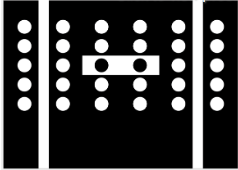As the automotive industry embraces advanced driver-assistance systems, the importance of accurate ADAS calibration has never been more critical. Forward-facing cameras are at the heart of many of these systems, providing essential data for features like adaptive cruise control, lane-keeping assistance, and collision avoidance. Ensuring that these cameras are perfectly calibrated not only enhances vehicle safety but also improves the overall driving experience.
With the rise of portable ADAS solutions, technicians now have more flexibility than ever when it comes to performing calibrations on-site. Options like the Carcal ADAS and the Affordable Auto Glass ADAS Target System offer accessible, cost-effective solutions under $5500, making it feasible for shops to invest in high-quality calibration equipment. Whether you're using a static ADAS calibration stand or more advanced systems, understanding how to effectively utilize these tools is key to mastering the calibration process. As we delve deeper into the specifics of forward-facing camera calibration, we'll explore the best practices, types of calibration setups, and the essential equipment needed to ensure precision and reliability.

Essential Tools for ADAS Calibration
To achieve precise calibration of forward-facing cameras in Advanced Driver Assistance Systems, having the right tools is crucial. One of the foundational tools is a Portable ADAS calibration stand. This equipment allows technicians to set up the calibration process efficiently and accurately, often in various locations without the need for extensive infrastructure. The ability to transport and deploy calibration equipment quickly makes it ideal for busy automotive repair shops.
Another essential tool is an affordable ADAS calibration stand designed for different vehicle makes and models. static adas calibration stand provide adjustable setups that accommodate various vehicle heights and alignments, ensuring that the calibration process aligns perfectly with the vehicle's specifications. For those working with Subaru vehicles, a Subaru mono calibration target is a specific tool that helps in achieving accurate calibration outcomes, emphasizing the importance of using manufacturer-specific tools for the best results.
In addition to the calibration stands, having access to auto glass camera calibration targets is vital. These targets assist in focusing and aligning the cameras during the calibration process. They ensure that the forward-facing cameras are set to the precise angles needed for optimal performance. When combined with the features of the Carcal ADAS system and other compatible tools, automotive technicians can achieve high-quality results without exceeding budget constraints, as many of these tools are available under the price point of $5500.
Cost-Effective Solutions for Accurate Calibration
In the competitive market of automotive services, affordability without compromising quality is essential. One standout option is the Affordable Auto Glass ADAS Target System, which provides reliable calibration solutions at a price point that suits many small to medium-sized repair shops. This system offers the necessary tools for accurate adjustments without the hefty investment often associated with advanced calibration technologies. By choosing a system under 5500, workshops can maximize their return on investment while ensuring the precision required for vehicle safety.
The emergence of Portable ADAS systems has significantly transformed the calibration landscape. These systems, like the Carcal ADAS, enhance operational flexibility by allowing technicians to conduct calibrations on-site, reducing the dependency on large, fixed calibration facilities. Their compact design and ease of use make them particularly attractive, as they maintain the accuracy needed for forward-facing cameras, a crucial component of modern ADAS technologies. This convenience combined with affordability makes Portable ADAS a practical choice for businesses looking to optimize workflow while keeping expenses in check.
Utilizing a Static ADAS Calibration Stand is another viable strategy for workshops aiming to enhance their calibration capabilities. These stands are designed to provide stable support and precise alignment for various vehicle models, including those that require Subaru mono calibration targets. Investing in a static calibration stand ensures that repairs are not only cost-effective but also yield accurate results every time. With options available for under 5500, workshops can find the right equipment that delivers high-quality results without breaking the bank, ensuring customer satisfaction and safety on the roads.
Step-by-Step Guide to Static ADAS Calibration
To begin the static ADAS calibration process, gather all necessary tools and equipment, including an affordable ADAS calibration stand and the Subaru mono calibration target. Ensure that the vehicle is parked on a flat and level surface to avoid any discrepancies during calibration. Connect the Portable ADAS system to the vehicle’s diagnostic port and verify that the system is functioning properly before proceeding.
Next, position the calibration stand in front of the vehicle according to the specifications provided by the ADAS manufacturer. Align the calibration target with the forward-facing camera, ensuring it is at the correct height and distance as outlined in the vehicle's repair manual. Double-check the alignment before locking the calibration stand in place, as precise positioning is crucial for accurate calibration outcomes.
Once everything is set up, initiate the calibration routine through the Portable ADAS system. Follow the on-screen instructions to complete the procedure, which may include a series of tests to confirm that the camera is properly aligned and functioning as intended. After successful calibration, review the results and perform a final inspection of the camera's performance to ensure the ADAS system operates safely and effectively.
